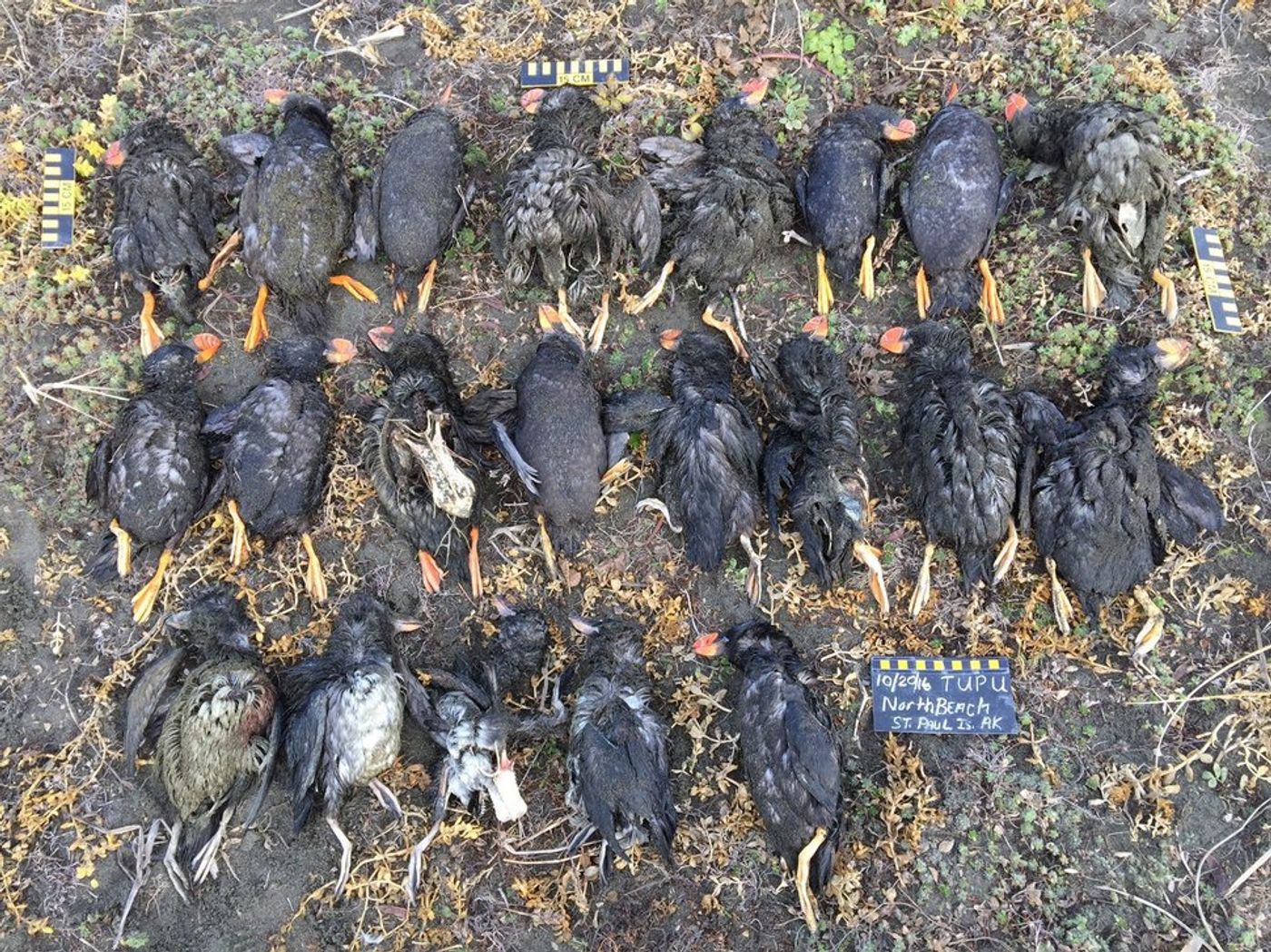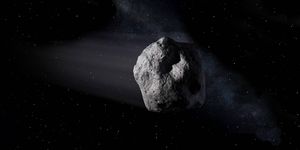According the
Yale Environment 360, starting in mid-October, hundreds of tufted puffins began washing up dead and emaciated on islands in the Bering Sea off the coast of Alaska. The birds weren’t sick, but were in an “advanced state of starvation,”
National Geographic reported. While the deaths are alarming, scientists are also concerned about them being a harbinger of bad news for other marine species in the northern Pacific Ocean. The Bering Sea is known to be one of the most productive seafood fisheries in the world, though record-warm water temperatures in the region earlier this year may have shifted or reduced critical ocean food sources — small fish and zooplankton called copepods — affecting not only the puffins, but also dozens of other marine species, from seals to salmon to crab. It could also greatly impact the $1 billion-a-year pollock fishing industry that provides flaky white filets for everything from McDonald's fish sandwiches to frozen fish sticks, according to National Geograpic.

“The Bering Sea has been off-the-charts warm,” Nate Mantua, an ecologist at the National Oceanic and Atmospheric Administration’s Southwest Fisheries Science Center, told National Geographic. “We’ve never seen anything like this. We’re in uncharted territory. We’re in the midst of an extraordinary time.” Even the pool of cold water that normally rests on the bottom of the Bering Sea was at times 6 degrees Celsius warmer than usual. The maximum summer temperatures this year in the Bering Sea were the warmest ever recorded. Janet Duffy-Anderson of NOAA’s Alaska Fisheries Science Center told
HuffPost that 2016 was the “the third warm year in a row for the Bering.” Unfortunately, the trend seems as if it will continue; “2017 is also forecasted to be very warm,” Duffy-Anderson added.
According to National Geographic, under normal cycles in the Pacific Ocean, warm water usually translates to less food, and so far that's what scientists are seeing, especially among the tiny copepods that are food for smaller fish and other animals. "When it's warm we usually no longer have a lot of large, fatty zooplankton around," Stabeno said. Instead, the sea usually includes smaller, less nutritious zooplankton. "But this year there just wasn't much of anything."
Duffy-Anderson says, "That bodes poorly for fish and birds and mammals. It's that zooplankton prey base that provides food for young pollock that are then eaten by birds and cod and halibut and even older pollock." Puffins, too, are clearly being affected.
However, what’s particularly scary about this event is that it is not an isolated occurrence. Puffin populations around the world have been suffering as ocean temperature rises. This year the Atlantic puffin population in the Gulf of Maine suffered its worst reproductive season ever. In 2013, The Associated Press described dozens of emaciated puffin carcasses washing up in the Gulf. Chick survival rates were plummeting and adults were starving to death, the report said. That same year, more than 2,500 dead puffins were found on the shores of Scotland. And in Iceland,home to more than half the world’s puffin population, colonies have been collapsing for years.
“Clearly something very weird is going on,” Julia Parrish, an ecologist at the University of Washington, told National Geographic. “It’s basically every year now we’re getting some huge mass-mortality event.”
And puffins aren’t the only victims; seabirds in general seem to be particularly vulnerable to changes in climate. “It’s our marine canary in a coal mine, if you will,” Rebecca Holberton, a University of Maine professor, told the AP in 2013.
So, how is this affecting other marine animals? The gist of it comes down to too little research. "We don't know," Parrish said. "The Bering Sea is an incredibly big place, and we're just seeing this now."
Sources:
The Huffington Post,
National Geographic, Yale Environment 360










